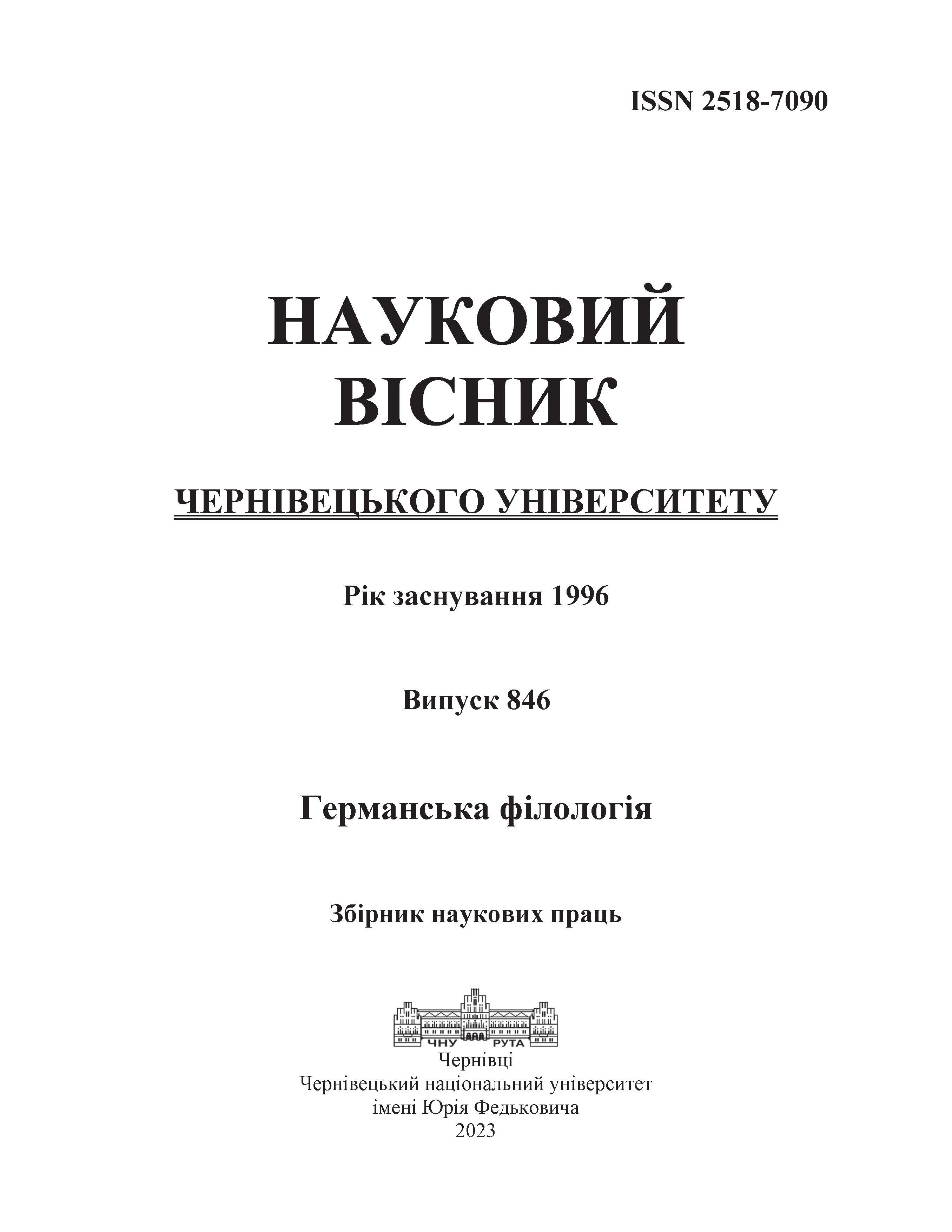LINGUISTIC AND CULTURAL PECULIARITIES OF REPRODUCTION OF BUKOVYNA IN TRANSLATIONS BY PETRO RYKHLO
DOI:
https://doi.org/10.31861/gph2023.846.102-110Keywords:
cultural specificity, intralinguistic culturally specific elements, extralinguistic culturally specific elements, translation strategiesAbstract
In the context of contemporary globalization, there is a growing interest in studying the cultures of different countries and peoples, and thus in literature that contains a cultural component. This creates the need to translate such texts into other languages. In this case, the translator's task is not only to convey the content, but also to introduce the reader to a particular culture, explain incomprehensible concepts and processes, while not losing the individual style of the text. This task requires the translator to understand the culturally specific elements, strategies and methods of translating these elements that correspond to the purpose and function of the text. This paper examines the literary heritage of the authors of Bukovyna in the first half of the twentieth century, namely Georg Drozdowski's work "Then in Chernivtsi and Around", which is rich in culturally specific elements and interfering phenomena that arose as a result of the long interaction of different ethnic groups in the territory of Bukovyna at that time. This paper analyzes the cultural specificity in Georg Drozdowski's "Then in Chernivtsi an
Around", and in the translation of this work by Petro Rykhlo. The study is devoted to the aspect of cultural specificity; for this purpose, intra- and extralinguistic culturally specific elements, as well as interference phenomena in the original and in the translation were analyzed. The work is relevant in the context of the growing interest in culturally specific aspects in translation and linguistic studies of Ukrainian-German language contacts in Bukovyna. The study employs various methods, such as: statistical method, continuous sampling method, comparative and typological methods, descriptive method. The study revealed that the following number of culturally specific units in the original, and thus in the translation, is contained in the percentage ratio: proper names (geographical names – 22.6%, names of people – 19.5%, names of institutions – 4.9%, trademarks – 0.8%), dialect – 12.8%, government – 6.8%, job titles – 5.6%, interferential phenomena – 5.3%, education – 4.9%, literature – 3.8%, colloquialism – 3.4%, food and drink – 3%, entertainment – 2.3%, other – 1.5%, proverbs – 1.1%, currency – 0.8%, sports – 0.8%, phraseology – 0.4%.
According to these data, we can say that the largest number of culturally specific elements is in the areas of "geographical names" and "names of people", which are considered to be extralinguistic cultural specificity. Among the intralinguistic culturally specific units, it is also worth highlighting dialectal vocabulary, which is the most numerous among these units and also contains many interfering phenomena; the adaptation of germanisms, polonisms, and yiddishisms into Ukrainian has been traced.
From a pragmatic point of view, this study shows that the translator managed to convey not only the content of the text, which contains a large number of culturally specific units and interfering phenomena, but also the style, atmosphere, emotional coloring, and author's intention. This work reflects an important aspect of translation activity related to the preservation of cultural specificity in translations and the study of language contacts in intercultural communication.





